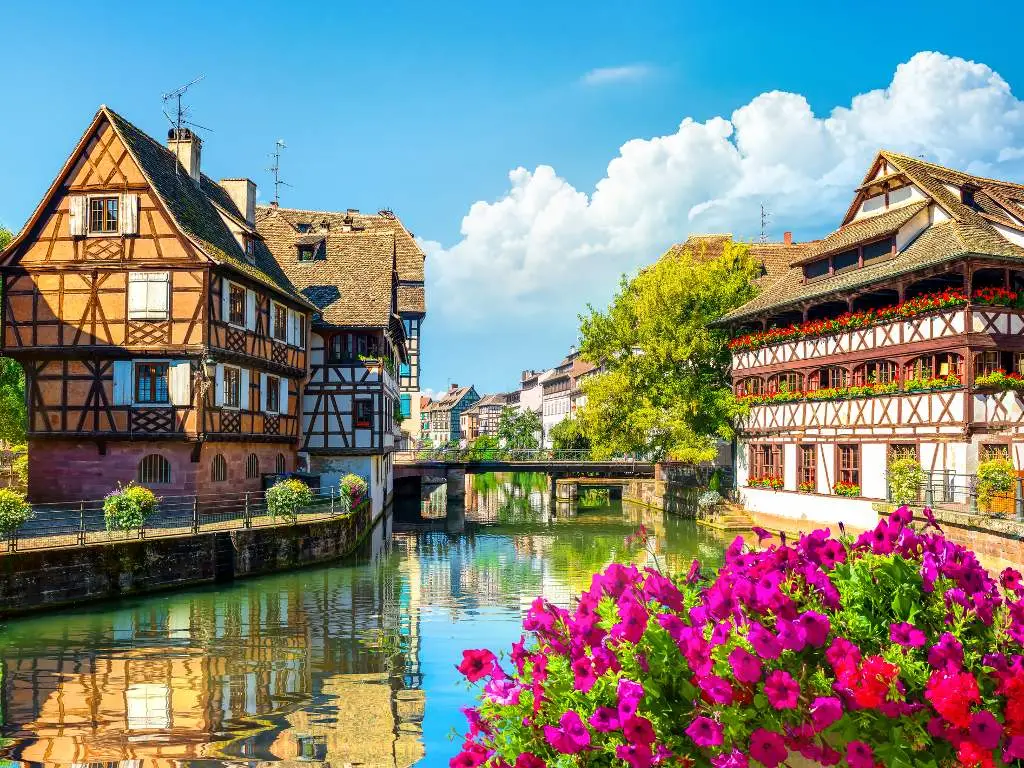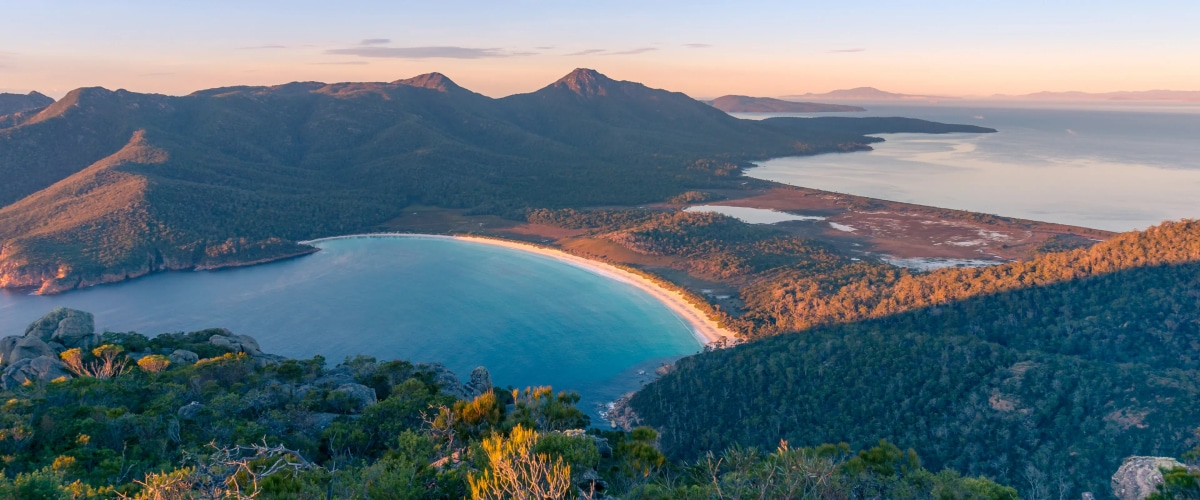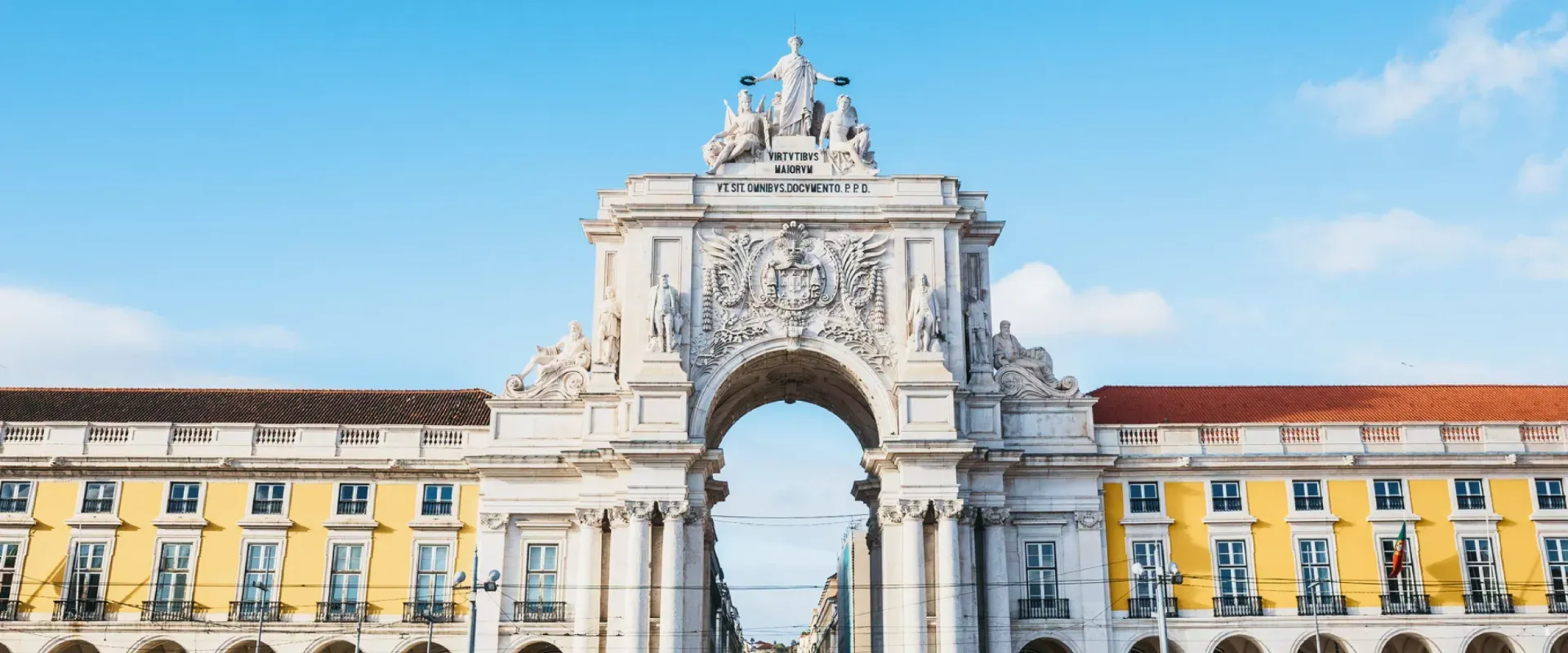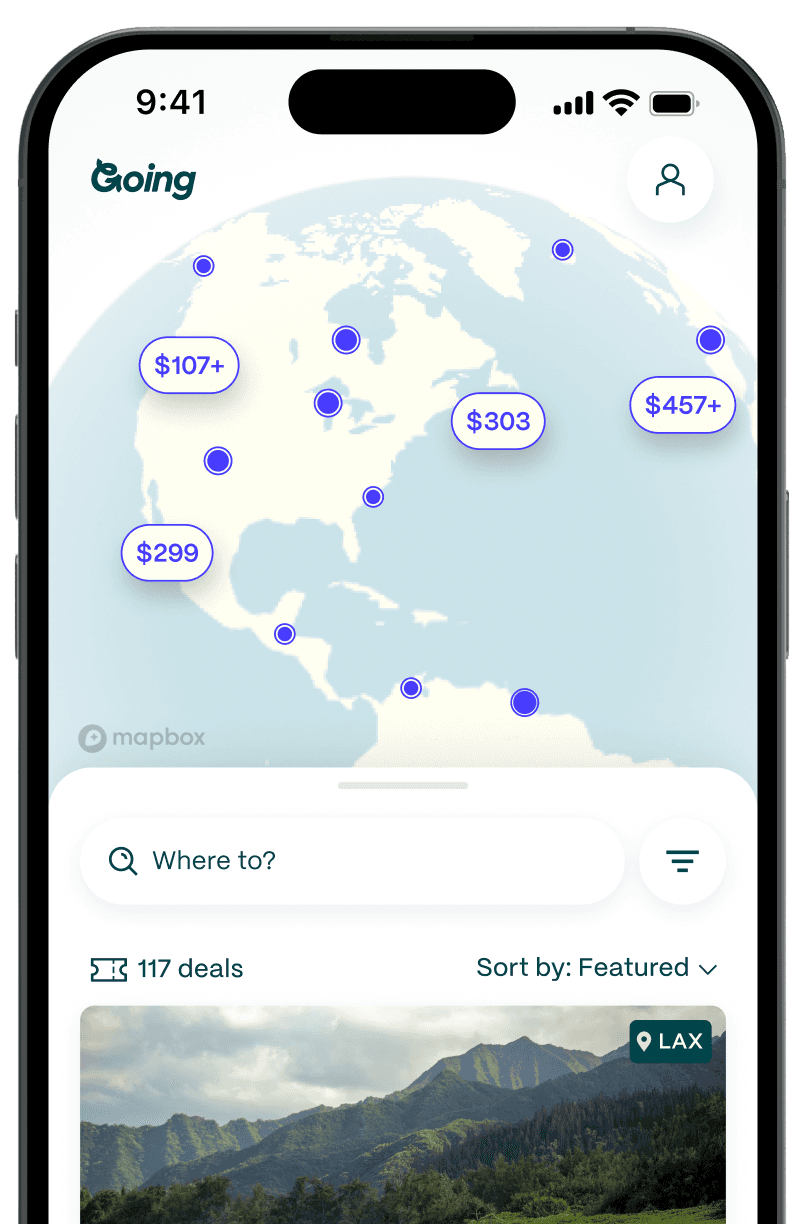
Costa Rica: The Small Central American Country With Five Active Volcanoes
With about a quarter of its land protected as parks, reserves, and wildlife refuges, Costa Rica is brimming with life. There are about 1,900 species of trees, 9,000 flowering plants, and 800 ferns. There is also an abundance of animal species, with birds, mammals, amphibians, and reptiles coming in at over 1,500 species (and that's not even counting the insects).
Livelihood extends well beyond the plants and animals of Costa Rica to the humans that live there as well. The laid-back “pura vida” lifestyle is evident. The locals are friendly, family-centered, and spend much of their time among nature, which likely contributes to Costa Rica’s designation as an incredibly happy country, as well as its home to a “blue zone”—one of the few places in the world where people live the longest.
In 1948, Costa Rica dissolved its army, vowing to use the money for education and social security. Now, with education free and mandatory, Costa Rica boasts a 98% literacy rate (for reference, the US has a 79% literacy rate). More recently, the Costa Rican government committed to green energy. In 2021, 98% of its energy came from renewable resources, such as hydroelectric and solar.
As if this all isn’t reason enough to make a beeline for the Central American country, you can also trek through rainforests, zipline on volcanoes, and relax on the beaches that dot its diverse coastline—electric sunsets included.
The land of pura vida
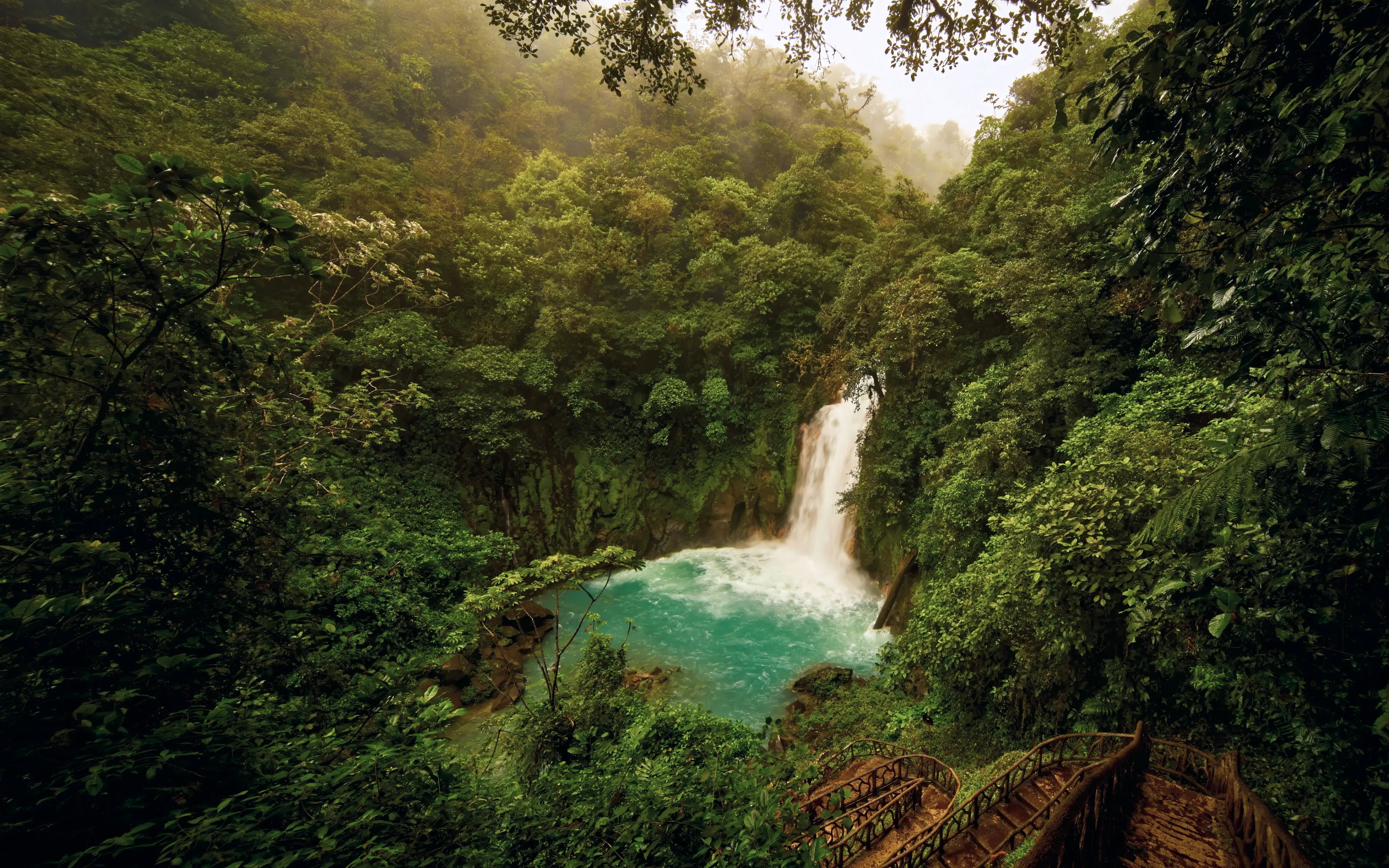
You can’t go to Costa Rica without hearing ”pura vida.” Translating to “pure life,” the phrase embodies the spirit of happiness, gratitude, and positivity. You may hear it as a greeting when you enter your hotel: “Pura vida, amigo!” It’s also used as a feeling: “Your note made me feel pura vida.” And it’s used as an adjective: “That new song is pura vida (totally awesome).” It’s also printed on souvenirs, serving as a happy reminder of your trip long after you’ve left.
Clearly, pura vida is doing something right, as Costa Rica consistently ranks at the top of indexes measuring the overall happiness of countries around the world. It previously ranked at the top of the Happy Planet Index (HPI)—which measured life satisfaction, life expectancy, and ecological footprint—four years running. (For reference, the US ranks #102 on the HPI.) More recently, it ranked #6 in the World Happiness Report.

A kingdom for animals
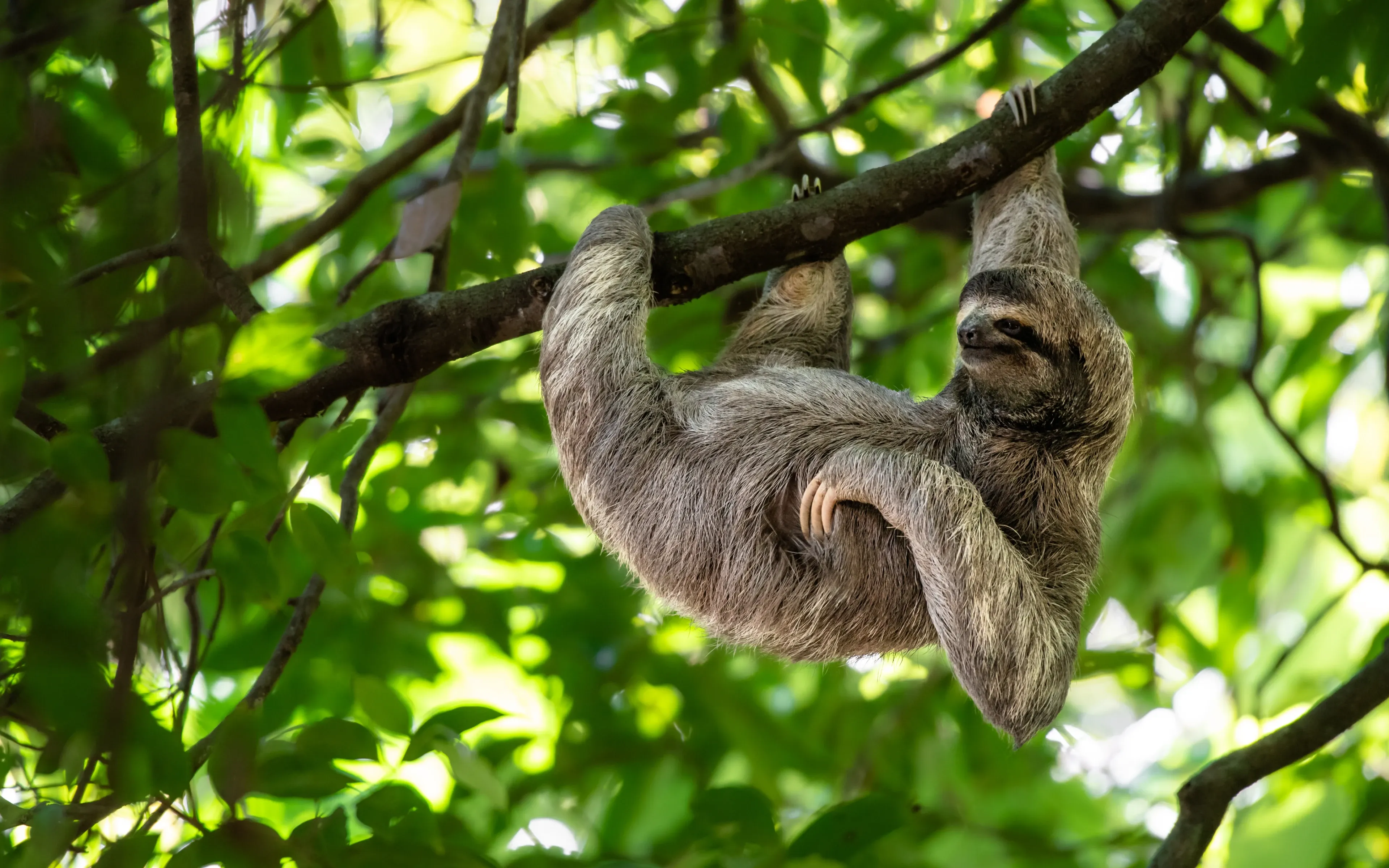
Costa Rica is home to 4% of all species on Earth, with 500,000 different plants and animals. Sloths—the national animal—are plentiful in the rainforest, yet occasionally elusive due to their camouflage. Howler monkeys are easier to find—you can hear them from miles away, as they’re one of the loudest animals in the world (as loud as fireworks, ambulances, and live rock concerts).
With bright-red feathers and a long tail, scarlet macaws are dazzling, especially when you see them soar in flocks of up to 30. While their population is declining due to habitat destruction, you still have a good chance of seeing them in the national parks. There are also toucans, tree frogs, snakes, sea turtles, and tons of other animals to be observed.
Your best chance of spotting animals in the wild is to hire a guide certified by the national tourism board. They usually congregate at the national park entrances. Your hotel will readily recommend its favorites. Guides can pick you up from your accommodations or meet you there, crafting a tour to meet your needs, whether that’s through a park, private refuge, or even by boat. Just be specific with what you’re hoping to see so that your guide can keep an eye out.
The floor is lava
Coming in at the size of West Virginia, Costa Rica manages to pack in 200 volcanic formations—which are classified as dormant or extinct—and five active volcanoes. It’s part of the Central American volcanic arc, a 932-mile chain formed by plate tectonics. The rich volcanic soil supports the biodiversity of the rainforests and contributes to its lush landscape.
Arenal, towering above the small town of La Fortuna, is the most famous of Costa Rica’s volcanoes due to its reputation for being extremely active—it’s also very photogenic. It’s located about 80 miles (a three-hour drive) northwest of the capital, San José.
Its most recent eruption was in 2010, yet years of geothermal activity have produced ecotermales (hot springs) that make the region as relaxing as it is explosive. This has led to many resorts in the La Fortuna area, where you can relax in magnesium-rich ecotermales while gazing up at the slumbering stratovolcano.
You can also drive to the peaks of two other volcanoes, Poás and Irazú, and stare into the depths of their colorful acidic lakes. Poás is located in the Central Valley, 30 miles northwest of San Jose, making it a great day trip from the capital. Irazú, the highest volcano in the country, is near Cartago, about 30 miles east of the capital.
Surf’s up, beaches
Known widely as one of the best places in the world to surf, Costa Rica has waves for everyone. The water is warm, hovering around 77–86°F (25–30°C), and the waves are consistent. Costa Rica is also home to Central America’s only World Surfing Reserve, which protects outstanding surf zones and their environments, located in Playa Hermosa. The best towns for surfing are Tamarindo, Nosara, and Santa Teresa, each with their own surf schools and camps, with options no matter your budget or skill level.
If you’re not in the mood to ride the waves, you can still hit the beaches along Costa Rica’s varied coastline. Some feature coarse black sand while others are sugar-white, pink-hued, or even covered in volcanic rock. On the Caribbean side, head south to places like Puerto Viejo (laid-back, unique atmosphere with a mix of Afro-Caribbean and Indigenous culture) or Cahuita (warm, calm, tropical waters and black-sand beaches).
On the Pacific side, the province of Guanacaste has stellar beaches thanks to consistent sun and water activities. Arguably #1 for the most beautiful beach, though, is Playa Conchal. Located at the top of the Nicoya Peninsula near the town of Brasilito, it has clear water and a beach made of crushed seashells.
Parks of plenty
Costa Rica is home to at least 28 national parks and reserves, three of which are UNESCO World Heritage sites. Monteverde Cloud Forest Reserve is one of the most bewitching and fairytale-like, consistently blanketed in a hazy mist. It also happens to be home to half of Costa Rica’s biodiversity. In Tenorio Volcano National Park, hike a mile through the rainforest, and you’ll arrive at the milky turquoise waters of the Rio Celeste, where local lore says that God dipped his paintbrush in the water while he was painting the sky (the more scientific explanation has to do with minerals).
Another favorite for adventure travelers and conservationists alike is Tortuguero National Park. Tough to get to, as it’s only reachable by boat or plane, the park has 11 habitats, including beach, marine, estuary, rainforest, mangroves, swamps, and lagoons. It is most renowned, however, for the sea turtles that nest on its 20 miles of protected beaches each March through October. For a chance to see the turtles nesting—or maybe even see the hatchlings make their way from the nest to the water for the first time—you must have a guide (it’s the law), which you can hire at the kiosk in the middle of the village of Tortuguero or through your hotel.
The birth of recreational ziplining
While the concept of ziplining has been around for centuries—people in the Himalayas used it as a means of transportation—the modern, recreational form began in Costa Rica in the 1970s. Donald Perry, a graduate student from California State University, was doing research in the rainforests of Costa Rica when he designed a zipline to help him navigate the canopy and conduct his research more easily.
The first recreational zipline followed shortly after, in 1994, when Canadian entrepreneur Darren Hreniuk built a course in Monteverde, Costa Rica, which is known as the “Original Canopy Tour” and is still in operation today. A quarter-century later, Costa Rica still manages to be a leader in ziplining, sending adrenaline junkies flying through forests at nearly 600 feet in the air and at speeds of up to 50 miles per hour.
When ziplining, harnessed passengers glide along a steel cable suspended between trees, usually over a valley. The views—particularly in Costa Rica, where rainforests are lush and teeming with wildlife—are tremendous, and the activity can be accessed by most people, regardless of age or fitness level. Find the best canopy tours in the La Fortuna area (near Arenal) and Monteverde (about 70 miles southwest of Arenal). There are also exciting ziplines in Rincón de la Vieja, a lesser-known park with two volcanoes. It makes for a nice day trip in Guanacaste if you’re staying on the Pacific side.
Beach treats and soda eats

While Costa Rica is not necessarily known for its local cuisine, the sea and fertile land provide an abundance of fruits, vegetables, and seafood that can be prepared fresh in tasty, refreshing ways. Treats can be found on the street—or sometimes even on the beach. If you’re strolling in the sand and hear, “Pipa!” head directly to the vendor, who’ll slice the top off a coconut and pop a straw in for fresh coconut water. You can also find green, fresh-from-the-tree mango in season March through June, which is sold in plastic baggies with salt and lime.
Ceviche is served in most restaurants. It’s fresh fish, usually sea bass or mahi mahi, “cooked” in citrus juice so that the acid of the juice denatures the fish in a way similar to heat, and mixed with red bell pepper, onion, and cilantro, and then served with chips. For breakfast, Costa Rican sodas—small, local restaurants found in each town or pueblo—serve gallo pinto, a delicious combination of beans and rice that pairs perfectly with eggs.
Blue zones and green tourism
In Costa Rica, longevity is the name of the game, and that goes for both its residents and the land they occupy. Blue zones and green tourism foster this longevity.
There are five places in the world that Harvard scientists have named blue zones—where people are the healthiest and live the longest. One of those blue zones is Costa Rica’s Nicoya Peninsula. In Nicoya, the average lifespan is 85 (compared to 77 in the US). According to the book The Blue Zones: Lessons For Living Longer From The People Who’ve Lived The Longest, written by longevity expert Dan Buettner, the cultures within blue zones emphasize family, a positive outlook, a sense of purpose, and a sense of connection to the greater good.
Costa Rica is also a pioneer of ecotourism. While it focused on farming and agriculture in the early 20th century (like most Latin American countries did), deforesting much of their land in the process, the 1970s brought change. The government protected some 25% of its land as national parks, which included reforesting them. And in the 1990s, the Costa Rican Tourist Board developed the Certification for Sustainable Tourism (CST), focusing on environmental conservation, strong community relationships, and economic viability; the program is considered the model for sustainable tourism in Latin America.
Costa Rica’s green shift benefits visitors and locals alike: Visitors have ample opportunity to appreciate the plants and animals of Costa Rica in their natural habitats, and locals have more work opportunities. After all, at least 8% of the country’s GDP comes from ecotourism, and more than a quarter of Costa Ricans work either directly or indirectly in the tourism field.
Good to know
Is Costa Rica expensive?
While it may be more expensive to visit Costa Rica than its Central American neighbors, the country is actually affordable compared to the US. A mid-range hotel will cost around $115 per night, and a hostel is about $20. There are also opportunities at eco-lodges for volunteer work in exchange for lodging.
Haute cuisine is scarce, but a nice seafood dinner will run roughly $10-20. Eat like a local at a soda, and you can expect to pay around $6 for a casado—a filling meal with meat, rice, and a salad.
You can splurge on activities if you so choose. Canopy tours or river rafting: up to $100. Surf lessons: about $40. A guided rainforest tour: $10. A day at the beach is the best price: free.
Best time to visit Costa Rica
With year-round temperatures fluctuating between 78-82°F, there is really no bad time to visit Costa Rica weather-wise. High season is December through April, where dry weather and consistent sunshine bring hordes of vacationers to the coasts. The rainy season sees afternoon showers often lasting less than an hour and discounts at many hotels.
What languages are spoken in Costa Rica?
Spanish is the main language in Costa Rica. In tourist towns, the hospitality workers in hotels and restaurants will usually speak some English. But once you get off the beaten path, it may be a bit more difficult; however, Ticos (Costa Rican residents) will be charmed by any attempts you make at Spanish.
Costa Rica with kids
With almost unlimited activities for the littlest naturalists, this country is perfect for kids. Almost every activity welcomes children, and they will delight in the local plants and animals (especially the slimiest ones).
Costa Rica public transportation
There are hardly any public transportation options in Costa Rica. While there is a bus system, it can be confusing and is mainly used by locals.
Is Costa Rica safe?
Costa Rica ranks #54 out of 163, according to Vision of Humanity’s Global Peace Index. A country with no army, Costa Rica is one of the most peaceful countries in Latin America. However, you should not leave valuables in the car when you go to the beach, as phones and wallets can be stolen by opportunists.
Costa Rica ranks #29 with a score of 69/100 for LGBTQ+ equality, according to Equaldex's LGBT Equality Index. Costa Rica was the first country in Central America to legalize gay marriage, which happened in 2020.
Getting to Costa Rica
- Main airport: San Jose (SJO) is the largest airport, but Liberia (LIR) is closer to the beaches of the Pacific coast.
- Average Going deal price for cheap flights to Costa Rica: $331 roundtrip
More Latin American guides
Last updated August 8, 2025


